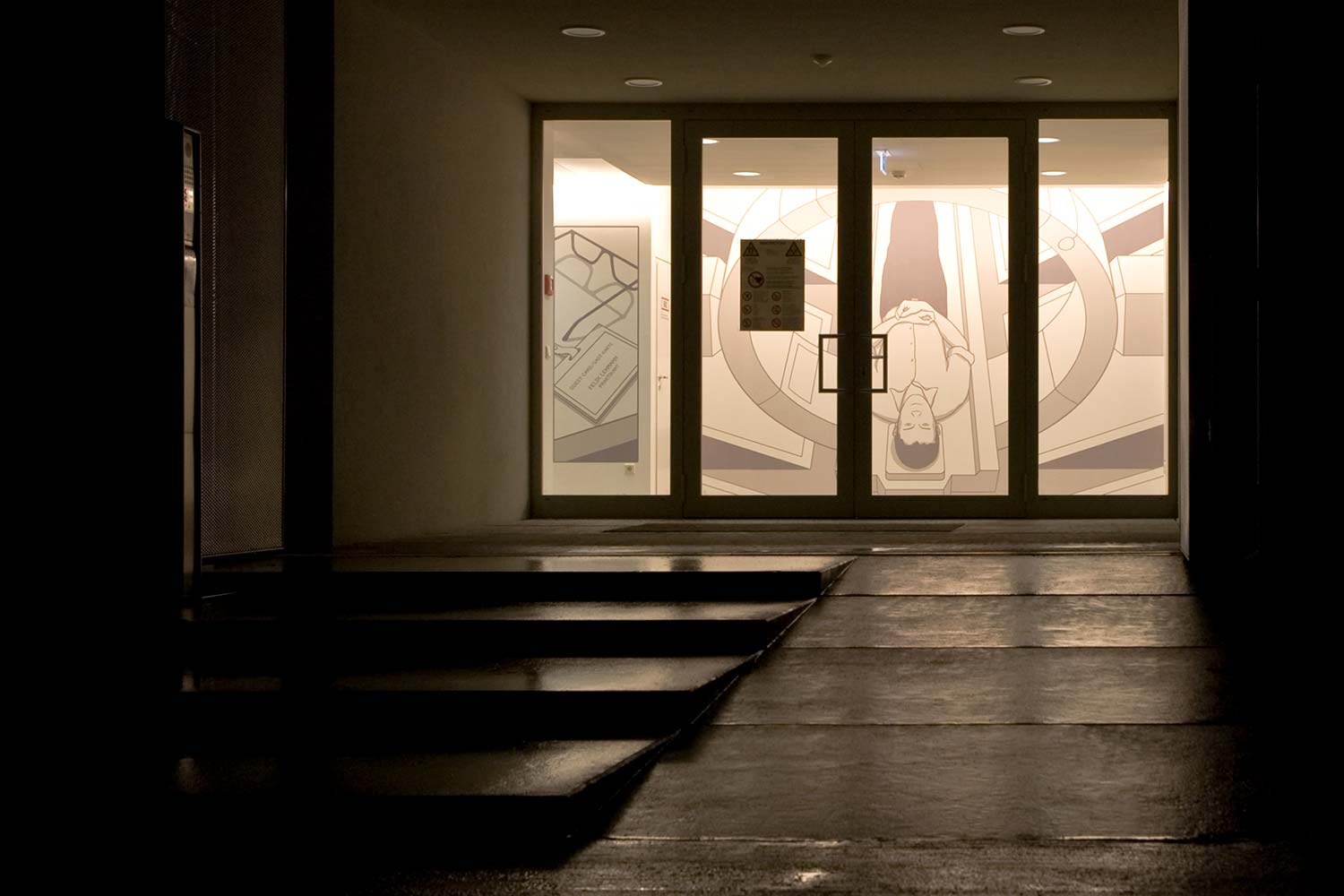18Comic vs Hitec
Robert Patz
2011, Comic-Wallpaper

The last work on this tour is found in the building of the Berlin Ultrahighfield Magnetic Resonance facility. It lies just beyond the glass door in the hallway, where you can see the beginning of a comic-strip wallpaper made by Robert Patz.
The wallpaper stretches all the way up the wall to the third story. Since only staff have access to the building, to see the whole piece you should visit the image gallery for the website of this exhibition. You‘ll find a link at the bottom of this text.
Robert Patz was born in 1981 in Magdeburg. In high school he studied mathematics and electronics; after finishing his diploma in 2001 he opened an art gallery in Magdeburg, where he exhibited modern paintings and graphics. He began studies of architecture in Cottbus in 2006, then switched to the University of Art in Berlin. In 2010 he won an ”Kunst am Bau” competition sponsored by the MDC, for students of the university and the College of Art in Weissensee, which funded the creation of the project. Since then he has worked as a free-lance artist and held an assistant‘s position at the University of Arts in Berlin. He has won numerous competitions and awards.
The comics present the special features of the facility, which has three magnetic resonance imaging (MRI) machines on three floors. In his concept paper, Patz wrote,
”The concerted, technology-laden atmosphere of the building is countered by a visual narrative” 1.
And,
”I aim to present the human side of the technology” 2.
The story told in the comics was produced in conjunction with the head of the facility, Prof. Thoralf Niendorf, and his colleagues. Robert Patz spent several weeks working with the team. The story tells how a student in the laboratory carries out secret experiments and ”disappears” into a scanner, pulled into a sort of interdimensional world. It‘s a way for Patz to address fears that people associate with the machines, using cheerful imagery to soften the emotional impact.
”Along the way the scientific work in the building assumes a central position in the story, where it can be commented on and interpreted in a fantastic way.” 1
One way to see this is as an appeal to scientists to provide clearer explanations of their work, to reduce people‘s fears and concerns.
You can find photos of the artwork and an interveiw with Robert Patz at www.campusart.berlin
If you now turn right, you will leave the campus. If you want to return to the starting point, follow the dashed line on the campus map. We thank you for your interest and would be pleased to welcome you again on campus.
1 opus4.kobv.de/opus4-udk/frontdoor/index/index/docId/1041 from 05.10.2021
2 Berliner Morgenpost, 27.07.2011, S11, siehe www.mdc-berlin.de/media/16497 from 05.10.2021